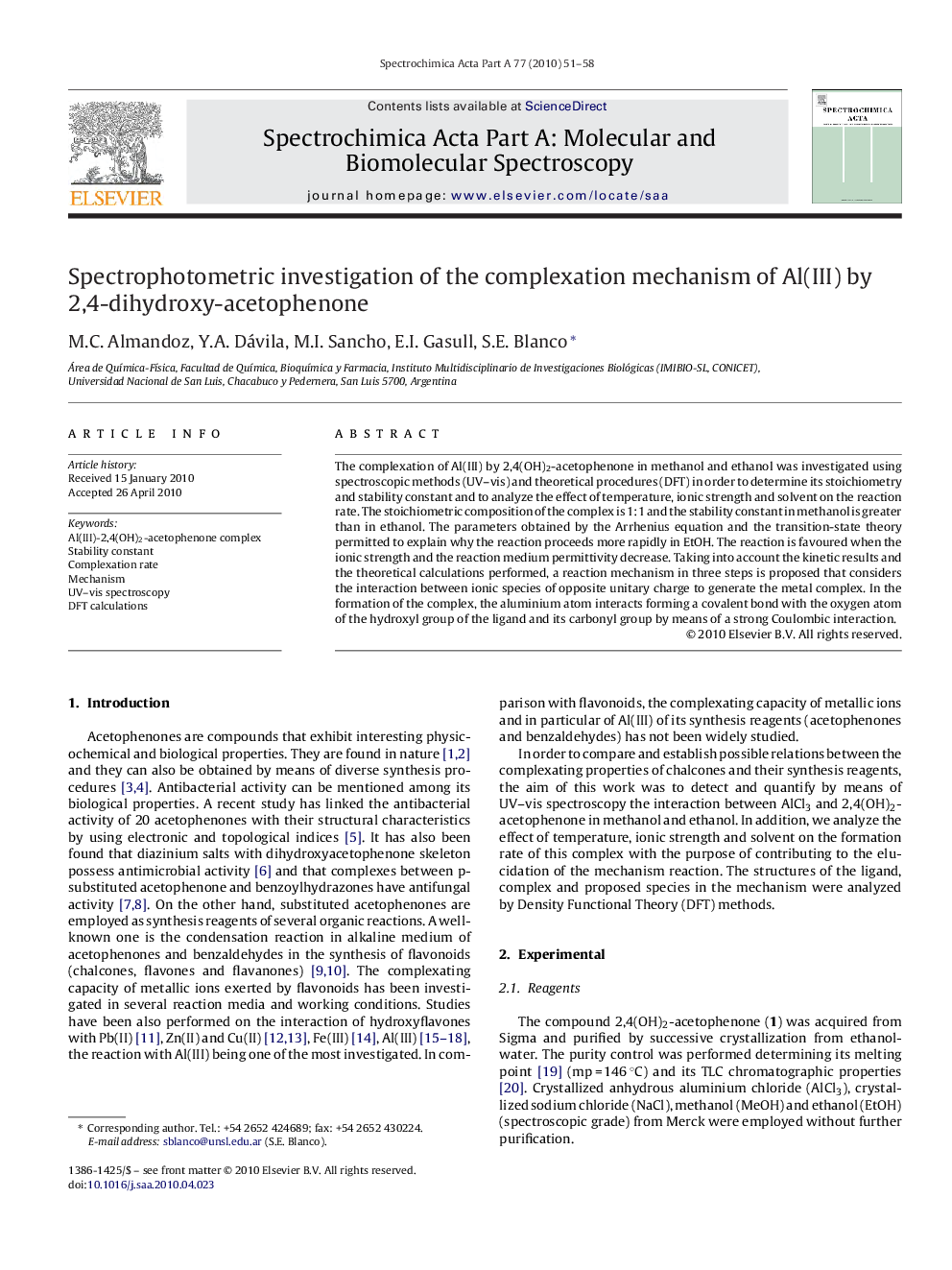| Article ID | Journal | Published Year | Pages | File Type |
|---|---|---|---|---|
| 1234029 | Spectrochimica Acta Part A: Molecular and Biomolecular Spectroscopy | 2010 | 8 Pages |
The complexation of Al(III) by 2,4(OH)2-acetophenone in methanol and ethanol was investigated using spectroscopic methods (UV–vis) and theoretical procedures (DFT) in order to determine its stoichiometry and stability constant and to analyze the effect of temperature, ionic strength and solvent on the reaction rate. The stoichiometric composition of the complex is 1:1 and the stability constant in methanol is greater than in ethanol. The parameters obtained by the Arrhenius equation and the transition-state theory permitted to explain why the reaction proceeds more rapidly in EtOH. The reaction is favoured when the ionic strength and the reaction medium permittivity decrease. Taking into account the kinetic results and the theoretical calculations performed, a reaction mechanism in three steps is proposed that considers the interaction between ionic species of opposite unitary charge to generate the metal complex. In the formation of the complex, the aluminium atom interacts forming a covalent bond with the oxygen atom of the hydroxyl group of the ligand and its carbonyl group by means of a strong Coulombic interaction.
